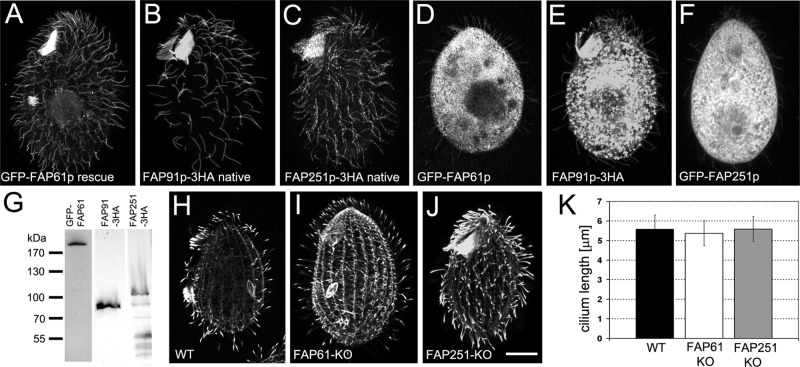FIGURE 1:
The CSC components FAP61, FAP91, and FA251 localize to Tetrahymena cilia but do not affect the length of cilia. (A–G) Localization of CSC proteins. FAP61 (A, D), FAP91 (B, E) and FAP251 (C, F) were expressed in FAP61-KO–rescued cells tagged with GFP (A) or tagged with 3HA in the native loci in wild-type background (B, C) or overexpressed as GFP-tagged (D, F) or 3HA-tagged (E) proteins. Note that all proteins localize to cilia; as expected, in the case of overexpression, the proteins also accumulated in the cell body. (G) Western blot of cilia (isolated from GFP-FAP61–rescued cells) and total cell extract (isolated from FAP91-3HA– and FAP251-3HA–expressing cells) probed with anti-GFP or anti-HA antibodies, respectively. Predicted molecular weight: GFP-FAP61, 223 kDa; FAP91-3HA, 79 kDa; and FAP251-3HA, 119 kDa. (H–J) Ciliary phenotype in knockout strains. FAP61-KO (I) and FAP251-KO (J) cells assemble cilia of normal length compared with wild-type cells (H) based on immunofluorescence with anti–α-tubulin antibodies. Bar, 10 μm. (K) Graph showing the average length of cilia. At least 50 cilia were measured for each genotype. Bars represent standard errors.

